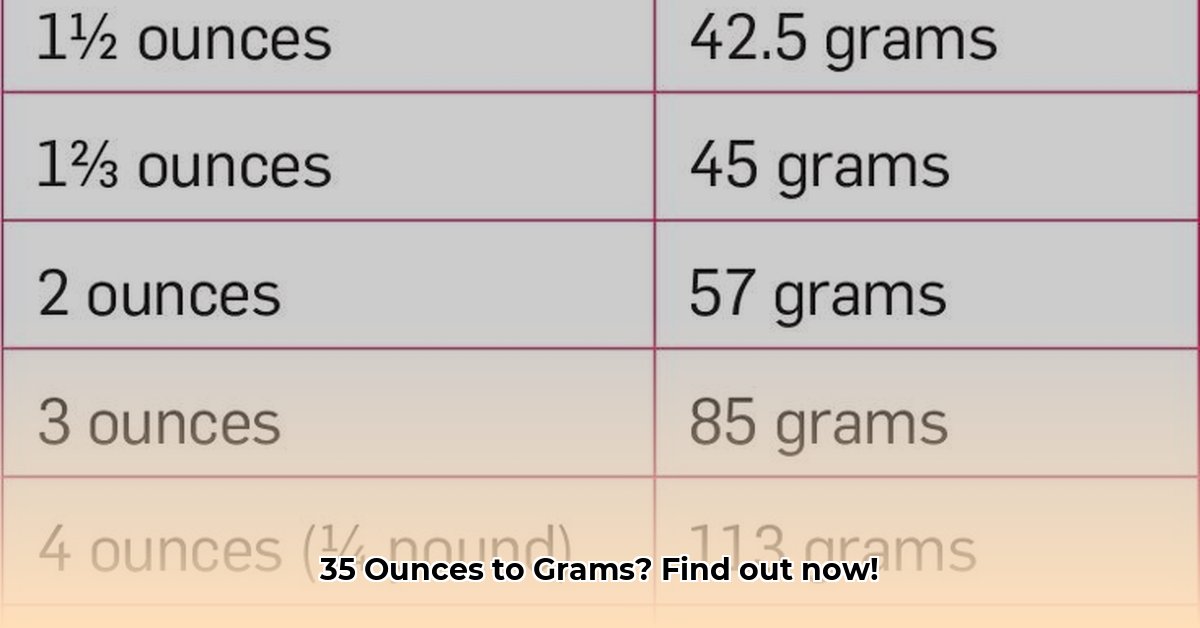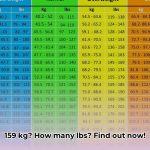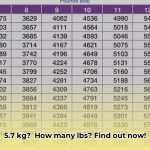992.23 g
Quick Conversion: Ounces to Grams
This guide provides a precise conversion of 35 ounces (oz) to grams (g), along with a detailed explanation of the process and relevant considerations.
Conversion Basics
Formula:
grams = ounces * 28.349523125
Standard Ounce: This calculation utilizes the avoirdupois ounce, the standard unit for measuring weight in the United States and other countries. This distinguishes it from the troy ounce (used for precious metals) and fluid ounces (used for volume).
Calculation for 35 oz:
grams = 35 oz * 28.349523125 g/oz = 992.233309375 g
Rounded Result: For most everyday purposes, rounding to 992.23 g is sufficient.
Conversion Table: Ounces to Grams
| Ounces (oz) | Grams (g) (Rounded) |
|---|---|
| 1 | 28.35 |
| 5 | 141.75 |
| 10 | 283.5 |
| 20 | 567 |
| 25 | 708.75 |
| 30 | 850.5 |
| 35 | 992.25 |
| 40 | 1134 |
| 45 | 1275.75 |
| 50 | 1417.5 |
Practical Applications and Importance of Accurate Conversion
Precise weight conversions are crucial in various fields. Here are some examples:
- Culinary Arts: Accurate measurements are essential for successful baking and cooking, especially when following recipes with specific weight requirements. Incorrect conversions can significantly alter the outcome of a dish.
- International Shipping: Customs declarations and postage calculations often require weights in grams or kilograms. Accurate conversions ensure proper documentation and avoid potential fees.
- Scientific Research & Medicine: Precise measurements, sometimes down to fractions of a gram, are crucial for experiments, formulating medications, and ensuring patient safety.
- Commerce and Trade: Accurate weight conversions are essential when dealing with materials sold by weight, particularly in industries like precious metal trading or bulk commodity sales.
Precision and Rounding
While the precise conversion of 35 oz is 992.233309375 g, rounding to two decimal places (992.23 g) is generally adequate for everyday applications. However, scientific or technical tasks may demand higher precision. The level of precision required depends on the specific context.
Ongoing Research and Measurement Standards
Although the current conversion factor (28.349523125) is highly accurate, ongoing research continually refines measurement methods and standards. Organizations like the National Institute of Standards and Technology (NIST) contribute to the evolution of measurement science, which may lead to slight adjustments in conversion factors over time. Such changes are typically minor and unlikely to significantly impact everyday conversions.
Uncertainty and the Nature of Measurement
It’s important to acknowledge that all measurements, including weight, involve some degree of uncertainty. This uncertainty is inherent in the process of quantifying the physical world and does not reflect a flaw in the measurement systems themselves. While we strive for precision, absolute certainty in measurement is likely unattainable. This ongoing pursuit of accuracy drives scientific progress and encourages a deeper understanding of the universe.
- Affordable Employee Wellness Fair Ideas for Any Budget - December 14, 2025
- Employee Wellness Programs Strategically Benefit Employee Health And Retention - December 13, 2025
- Health and Wellbeing Companies Driving Employee Engagement and Productivity - December 13, 2025
















